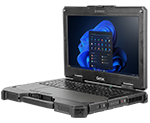Workers across various industries face safety considerations around air quality, temperature, and equipment operation. Keeping employees safe in industries including utilities, oil and gas, public safety, transportation, manufacturing, and natural resources requires the right technology. Workers need to be equipped with technology that keeps them in touch, on top of risks, and protected from known hazards as much as possible.
WORLDWIDE, THERE ARE APPROXIMATELY 374 MILLION OCCUPATIONAL ACCIDENTS AND 160 MILLION VICTIMS OF WORK-RELATED ILLNESSES.
The International Labor Organization estimates that there are 2.78 million deaths related to workplace accidents or diseases every year. Worldwide, there are approximately 374 million occupational accidents1 and 160 million victims of work-related illnesses. The ILO found that hazardous substances cause more than 650,000 deaths per year and that the construction industry has a disproportionately high rate of recorded accidents.2
In the United States alone, more than 5,300 workers died in 2019 while on the job; that’s 15 deaths every day.3 Work-related deaths in the US have reached their highest levels since 2007.4 The cost of work injuries in 2019 was more than US$170 billion.5

THE REPORT FOUND IMPROVED JOB QUALITY INCLUDES LESS EXPOSURE TO RISKS INCLUDING HAZARDS LIKE FUMES, CHEMICAL CONTACT, UNSAFE WORK PRACTICES, ETC.
An effective safety program has a return on investment of 200 per cent by helping reduce workers’ compensation costs and improving productivity.6 Safety can also help improve job quality, with a report covering 1.2 billion of the world’s workers finding that improved job quality is important for workers and employers alike. The report found improved job quality includes less exposure to risks including hazards like fumes, chemical contact, unsafe work practices, etc.7
In the US, companies using systems and software to measure contractors, and track and monitor employees’ and contractors’ safety before they even step on site can see safety incident reductions of as much as 50 per cent compared to averages from the Bureau of Labor Statistics.8
THE EMERGING ROLE OF TECHNOLOGY IN KEEPING WORKERS SAFE
BUSINESSES ARE NOW REALIZING THAT TECHNOLOGY CAN ALSO HELP IMPROVE THEIR SAFETY PROFILE.
Most organizations across industries have embraced technology as a way to improve productivity. Automating and streamlining processes using robots and other technological innovations can help businesses do more with less, reduce costs, and increase efficiency. However, businesses are now realizing that technology can also help improve their safety profile.
For example, businesses are using digital technology and software so employees can become better aware of their workplace surroundings and the dangers they may encounter. By using technology to improve awareness of and mitigate risks, organizations can more easily comply with the latest regulations and standards applicable to their industry in their country, such as OSHA.
THERE ARE FIVE WAYS TECHNOLOGY CAN HELP IMPROVE WORKER SAFETY:

1. COMMUNICATIONS
High-speed communication and real-time insights let employers know the status of air quality, heat, and specific risks so they can address these hazards before they cause an injury. If an injury were to occur, employees need reliable communications to call for help and let first.

2. HAZARD IDENTIFICATION
On-the-spot safety management through a mobile device can help organizations ensure they’re identifying and rectifying hazards as they arise. Workers can take pictures of hazards and complete mobile safety checklists and site inductions to ensure everyone is protected.
3. VIRTUAL AND AUGMENTED REALITY
Virtual reality and augmented reality can help with training employees on how to cope with dangerous situations without actually putting them in danger. Augmented reality can let technicians or experienced workers coach others through processes such as machine repair without having to increase the number of people physically in the environment. This can be useful if the repairs are dangerous, conditions are hazardous, or in the case of social .

4. DRONES
Drones can be used when sites are too dangerous for people to investigate, such as if there is a gas leak or other chemical spill. Drones can capture information and let clean-up teams determine the safest course of action without having to be exposed to the danger.

5. AUTOMATION AND ROBOTICS
Automation improves safety by removing the burden of heavy, manual work from people. Robots can do the heavy lifting, leaving people free to focus on more creative tasks. This is particularly useful in understaffed warehouses and other facilities where the pressure to maintain productivity can create a culture where some risk is accepted in exchange for getting work done more quickly. Adding robots to the workforce can alleviate the pressure and reduce the risk.
Robots can also help in production facilities or construction sites where people no longer need to walk from place to place to pick up the materials they need for their portion of the assembly or build. Instead, robots can bring them the parts they need, when they need them, reducing the distance walked by people and thus reducing fatigue and the risk of accidents.
Getac is a leading global provider of rugged computing solutions designed to help deliver a safer, more productive workplace with reliable technology that stands up to harsh and unpredictable environments.
To find out how Getac’s rugged solutions can help keep workers safe in your organization, contact the team today.
ABOUT THE AUTHOR

Joe Martin is the Product
Development and Industry
Solutions Director at Getac
and is an award-winning
technical products and services
sales management and
business development professional.
*Images used are for illustration purposes only.
1 https://www.ilo.org/global/topics/safety-and-health-at-work/lang--en/index.htm
2 https://www.ilo.org/moscow/areas-of-work/occupational-safety-and-health/WCMS_249278/lang--en/index.htm
3 https://www.osha.gov/data/commonstats
4 https://injuryfacts.nsc.org/work/work-overview/work-related-fatality-trends/
5 https://injuryfacts.nsc.org/work/costs/work-injury-costs/
6 https://www.nsc.org/Portals/0/Documents/JSEWorkplaceDocuments/Journey-to-Safety-Excellence- Safety-Business-Case-Executives.pdf
7 https://www.eurofound.europa.eu/sites/default/files/ef_publication/field_ef_document/ef18066en.pdf
8 https://www.ehstoday.com/safety-technology/article/21156179/how-technology-can-help-prevent-work-fatalities





















